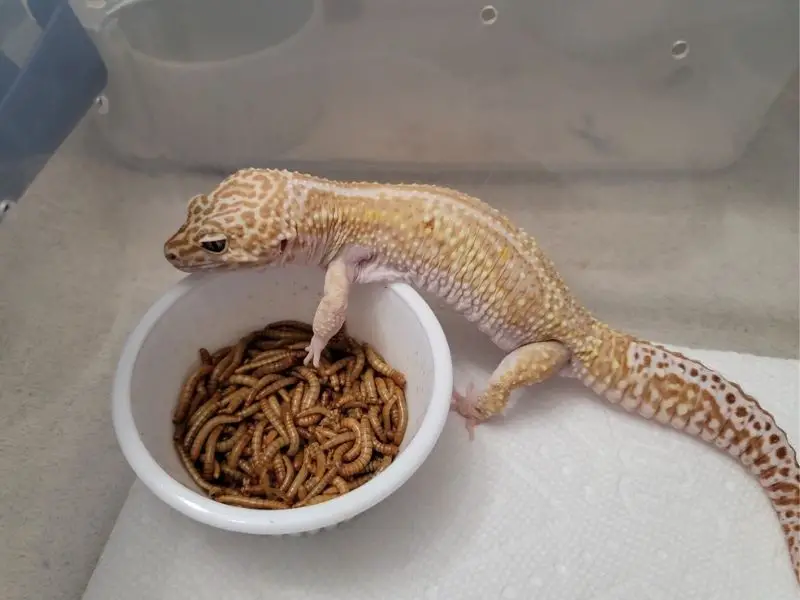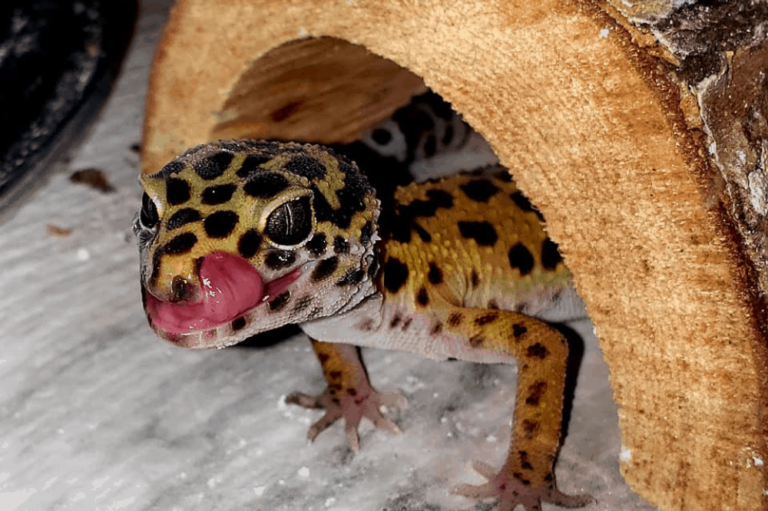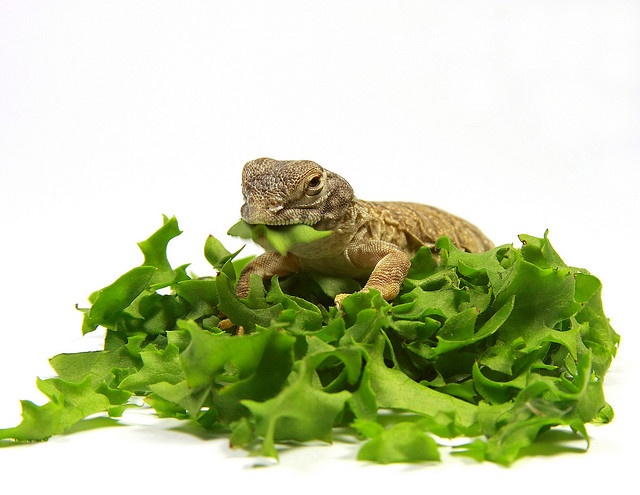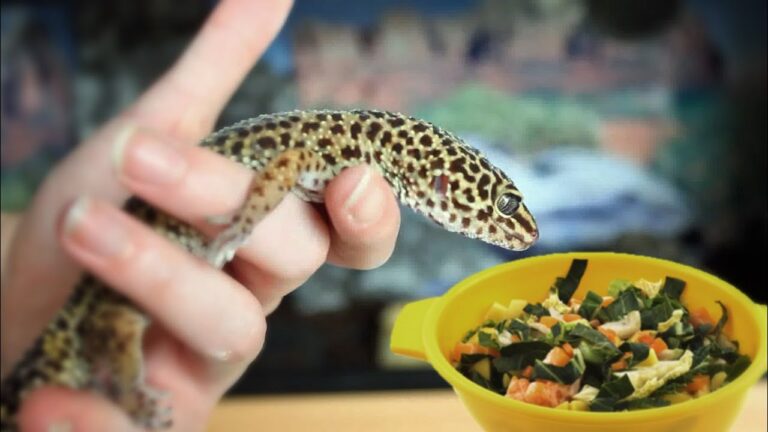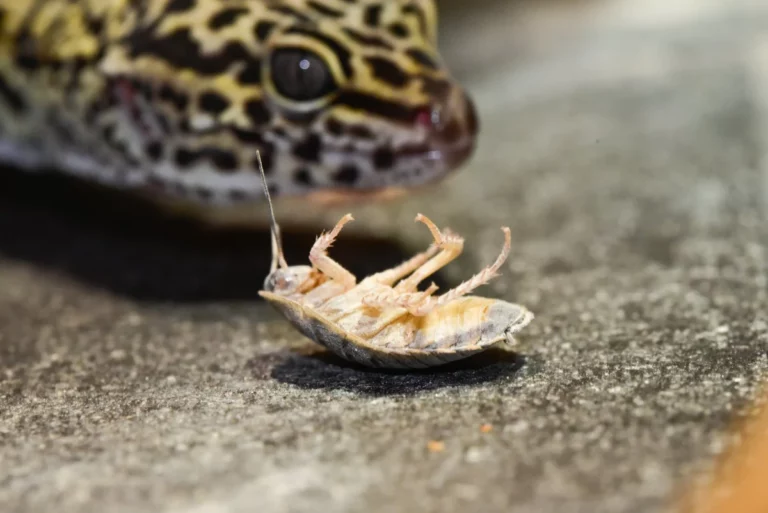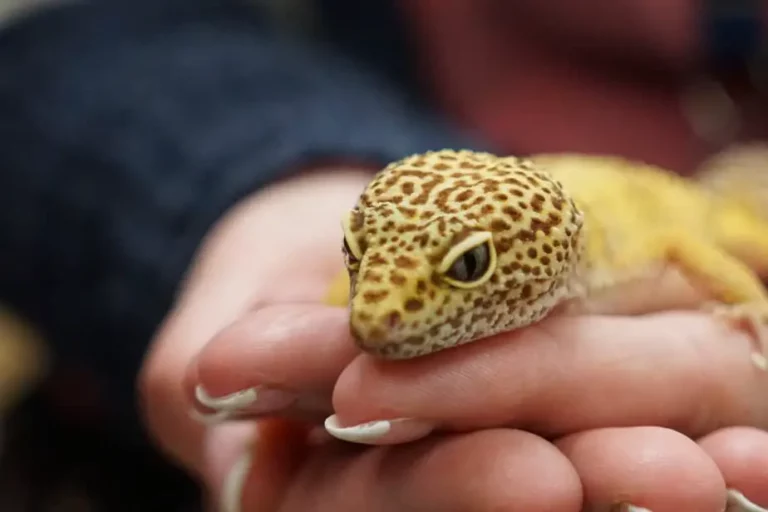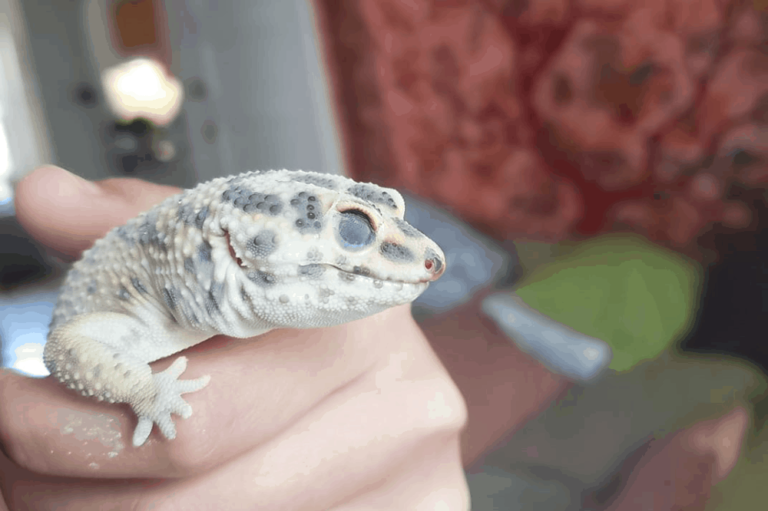How Many Mealworms To Feed A Leopard Gecko
As I gaze into the mesmerizing eyes of my beloved leopard gecko, I can’t help but marvel at the intricate beauty of nature’s creations. These captivating reptiles are not just fascinating to observe but also have unique dietary requirements that every responsible gecko owner should understand.
Today, I’ll take you on a journey into the world of leopard geckos and answer a question that often lingers in the minds of new gecko enthusiasts: “How many mealworms should I feed my leopard gecko?”
However, They have different meal plans based on their age. For babies (up to 4 inches), it’s 5-7 small crickets or mealworms daily. Growing juveniles (4-10 inches) get bigger meals every other day, and once they’re adults (around 10-12 months), 6-7 large crickets or mealworms 2-3 times a week are enough to keep them healthy.
So, let’s embark on this enlightening journey and discover the perfect mealworm balance for your scaly friend.
Benefits of Mealworms for Leopard Geckos:
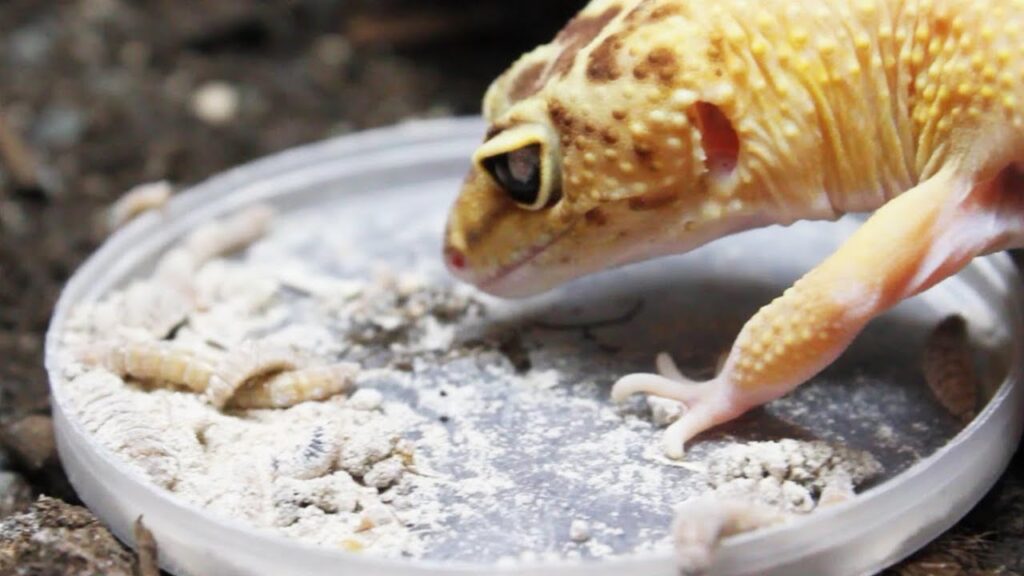
Low-Maintenance Excellence: These insects offer simplicity, durability, and convenience, making them an ideal choice for owners. Their minimal care requirements and ease of handling are remarkable.
Extended Shelf Life: With the ability to remain viable for weeks, mealworms can be stored in a refrigerator without the need for sustenance. This characteristic ensures a readily available food source, particularly for adult geckos, on a monthly or less frequent basis.
Safety Assurance: Unlike certain feeder insects prone to biting, they pose no harm to geckos. However, it’s advisable to confine them within a container to prevent any unexpected encounters in your pet enclosure.
Nutritional Value: Mealworms are a good source of essential nutrients including protein, fat, and fiber. They also contain vitamins and minerals like calcium, phosphorus, and potassium, which are important for overall health and proper growth.
Easy to Digest: They have a soft exoskeleton, making them relatively easy to digest, especially when compared to harder-shelled insects like crickets or super worms. This can be beneficial for geckos of all ages, including hatchlings and juveniles.
Size Variety: Also, available in various sizes, making it easy to select appropriate-sized mealworms for leopard geckos of different ages and sizes. This ensures can consume prey that is neither too large nor too small.
Convenience: They are also easy to store and can be kept in a container with some substrate (e.g., oats or bran) to maintain their health.
How do the nutritional values of mealworms compare to those of common feeder?
| Nutrient (per 100g) | Mealworms | Crickets | Dubia Roaches | Waxworms |
| Protein | 20-21g | 21-22g | 23-24g | 14-15g |
| Fat | 13-15g | 6-7g | 7-8g | 24-26g |
| Carbohydrates | 1-2g | 4-5g | 0.3-0.4g | 14-16g |
| Fiber | 1-2g | 1-2g | 1-2g | 0.1-0.2g |
| Calcium | 250-330mg | 5-10mg | 20-30mg | 10-20mg |
| Phosphorus | 800-1000mg | 200-300mg | 300-400mg | 900-1000mg |
| Potassium | 400-450mg | 350-400mg | 200-250mg | 220-230mg |
| Magnesium | 37-50mg | 24-30mg | 14-20mg | 10-12mg |
| Iron | 6-8mg | 3-5mg | 0.3-0.4mg | 1-1.5mg |
How Many Mealworms Should You Feed Leopard Geckos?
| Leopard Gecko Size (Inches) | Mealworms per Feeding | Frequency (Times per Week) |
| Baby (0.5-1.5 inches) | 1-2 mealworms | 5-7 times |
| Hatchlings (2-4 inches) | 2-4 mealworms | 3-4 times |
| Juveniles (4-6 inches) | 3-5 mealworms | 2-3 times |
| Adults (6-10 inches) | 4-6 mealworms | 1-2 times |
These recommendations provide a general guideline for feeding leopard geckos based on their size and age. Remember that individuals one may have different appetites, so it’s essential to monitor their weight and overall health to adjust the feeding amounts as needed. Providing a varied diet that includes other feeder insects and occasional treats is also important for their nutrition and enrichment.
Additionally, always gut-load the mealworms and dust them with calcium and vitamin supplements as required. Consulting with a reptile veterinarian or experienced breeder can offer more personalized guidance for your gecko’s specific dietary needs.
Some tips:
Egg-Laying Geckos: When they laying eggs or getting ready to, they need more calcium and nutrients. Add extra calcium to their food and offer a few more feeder insects. Vary their diet with different insects for better nutrition.
Underweight Geckos: If they are losing weight for any reason, feed them more until they regain a healthy weight. Keep a close eye on their progress and adjust their diet as needed to ensure their well-being.
How to Store Mealworms for Leopard Geckos?
Mealworms undergo a fascinating transformation from larva to pupa over a span of about 2 to 3 months. However, the containers typically provided when you buy them are often inadequate for housing them throughout their entire lifecycle. To ensure their well-being and maximize their use as a food source for your pets, it’s essential to transfer them to a suitable container.
- Opt for a plastic container with a smooth interior and sufficient depth to prevent escape even when the lid is off. This precautionary measure ensures stay contained.
- If your chosen container doesn’t already have ventilation holes in the lid, make small holes to allow airflow while keeping them secure.
- Prepare the container by adding a base layer of dry oats, oatmeal, or wheat bran. Aim for a layer that’s approximately 0.5 to 1 inch thick. The quantity should be proportional to the number of mealworms, with a general guideline of about 1/3 oats and 2/3 mealworms in the container.
- To keep them healthy and nutritious for your pets, introduce small chunks of vegetables like potatoes, carrots, and apples. Additionally, include some leafy greens for variety in their diet.
- Gently pour them into the prepared container. Placing the box on a white surface, such as a sheet or paper towel, can help you spot any stray that didn’t make it into the box.
- Ensure there is at least an inch of space between the mealworms and the container lid. Ideally, leave a gap of two to three inches to prevent them from crawling out when you open the lid.
- Seal the lid securely and position the container in a dark, cool location, maintaining a temperature below 80°F (26°C). This cooler environment slows down their development, prolonging their lifespan before they enter the pupal stage.
- For extended storage, you can place the container in the refrigerator, further slowing its development. However, be vigilant about checking their food regularly. Rotting food can pose a risk not only to the mealworms but also to the health of your gecko when you feed them.
A Note of Caution: Never subject mealworms to freezing temperatures, as this will result in their demise.
How to feed Leopard Gecko Mealworms?
Feeding mealworms to your Leopard Gecko is a straightforward process, but there are crucial steps to ensure their health and well-being:
Nutrient-Rich Mealworms: The quality of mealworms depends on what they eat. Always “gut-load” mealworms by feeding them a nutritious diet at least 24 hours before offering them to your gecko. This ensures your gecko gets essential vitamins and minerals.
Temperature Adjustment: If you’ve stored your mealworms in the refrigerator, allow them to reach room temperature before introducing them to your gecko’s enclosure. This prevents temperature shock to your pet.
Dusting for Nutrition: Dust your mealworms as needed, especially with calcium and vitamin D supplements. These additions are vital for your gecko’s overall health.
Feeding Setup: Place live, room-temperature, and dusted mealworms in a smooth bowl within the enclosure. This setup facilitates easy consumption, prevents escapes, and allows you to monitor your gecko’s eating habits.
Hand Feeding Technique: If preferred, you can hand-feed the worms using your fingers or soft-tipped tweezers. When hand-feeding, avoid force-feeding your gecko like a baby. Instead, hold the worm near your gecko, a few inches from its head. Wait until your gecko shows interest and “locks on” to the worm before allowing it to approach and eat.
Are Gut-Loading Mealworms Necessary for Leopard Geckos?
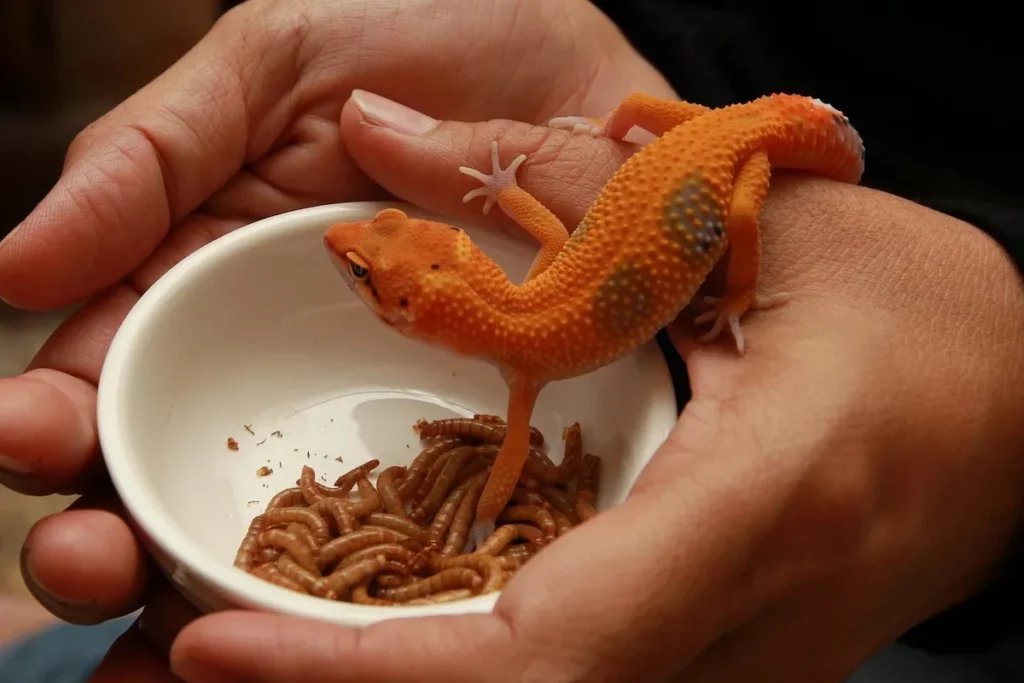
Absolutely, gut-loading mealworms is essential for Leopard Geckos. Since these geckos don’t consume fruits or vegetables, they rely on the micro-nutrients provided by the insects they eat. Here’s a breakdown of the key aspects:
What to Gut-Load Mealworms With: While there’s no need to stress about specifics, try using various vegetables, leafy greens, or fruits. Popular choices include carrots, sweet potatoes, apples, and oats as a base. Alternatively, you can find ready-made gut-loading mixes for geckos in stores, typically available as dry powders or small dried veggie chunks.
Supplementing Mealworms: Leopard Geckos require a specific calcium-to-phosphorus ratio, but most insects, including mealworms, have more phosphorus than calcium. To address this, dust the mealworms with calcium powder just before feeding them to your gecko. Here’s how:
- Place the supplement powder in a small bag, like a zip-lock bag.
- Add the mealworms and seal the bag.
- Gently shake for a few seconds, ensuring the mealworms are thoroughly coated in the powder.
- Remove the mealworms and offer them to your gecko.
- What to Supplement for Leopard Geckos: Leopard Geckos often lack three critical elements: calcium, vitamin D, and vitamin A due to their captivity diet. To counteract this, provide additional calcium, vitamin D, and possibly vitamin A through supplements or dusting.
Supplementation Frequency:
For adult Leopard Geckos, you should add calcium to every meal, and vitamin D + A at least once a week. There are specialized gecko mixes available that provide other essential micro-nutrients, typically used once a week or every other week. However, it’s crucial to follow the label instructions.
Can Mealworms Cause Impaction?
Yes,
Obesity: Excessive consumption can lead to obesity. This extra weight can put stress on their joints and organs, potentially leading to other health problems.
Nutritional Imbalances: Nutritional imbalances can occur when a particular feeder insect, such as mealworms, is consumed in excess. To receive all the vitamins and minerals needed, they need a varied diet. It’s possible for additional calories to become deficient if you rely too heavily on one kind of insect.
Digestive Problems: The higher likelihood of impaction associated with mealworms is primarily attributed to their tougher chitin shells, which are challenging to digest and can accumulate in the digestive tract.
Liver and Kidney Issues: A diet that is too high in protein, is often caused by excessiveness. Also, can put a strain on the liver and kidneys. This can lead to long-term health problems.
Reduced Appetite: Paradoxically, it reduces appetite over time as the gecko’s body tries to compensate. This can make it difficult for the gecko to get the nutrients it needs.
FAQs
Can mealworms bite leopard geckos?
No, Mealworms do not possess the capability to bite leopard geckos. They are not a threat in this regard.
Can Leopard Geckos choke on mealworms?
Yes, Leopard geckos can potentially choke on mealworms that are too large for their size. It’s crucial to select appropriately sized mealworms to prevent this.
Are mealworms too big for baby Leopard Geckos?
Yes, Mealworms can be too large for baby leopard geckos. It’s advisable to offer smaller, appropriately sized insects to ensure safe and easy digestion.
Is It Possible To Overfeed Mealworms To Your Leopard Gecko?
Yes, overfeeding mealworms can lead to obesity and nutritional imbalances in leopard geckos. It’s essential to follow recommended feeding guidelines based on their age and size.
What Size Mealworm Is Right For Your Leopard Gecko?
The appropriate mealworm size for leopard geckos varies with their age and size. Generally, select mealworms that are no wider than the gecko’s head to ensure safe and manageable consumption.
Final words:
In conclusion, determining the appropriate quantity of mealworms to feed my leopard gecko is a crucial aspect of its care. I must take into account my gecko’s age, size, and individual appetite when establishing a feeding routine. Providing a balanced diet that includes a variety of feeder insects, along with proper gut-loading and supplementation, is key to ensuring its nutritional needs are met.
Regular monitoring of my gecko’s weight and overall health allows me to adjust the mealworm quantity as needed, ensuring it thrives and maintains optimal well-being throughout its life. I will always seek advice from a reptile veterinarian or experienced breeder for personalized guidance on my specific gecko’s dietary requirements.

